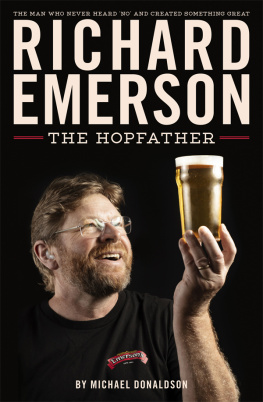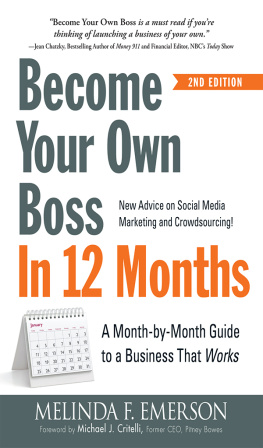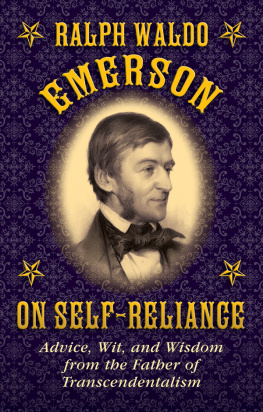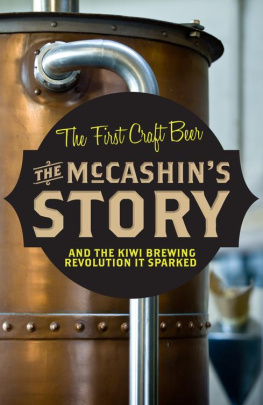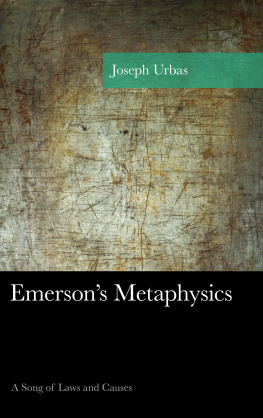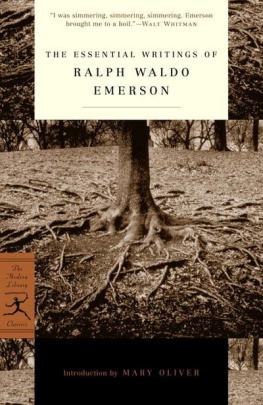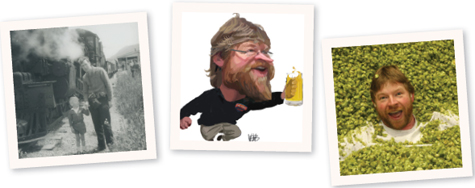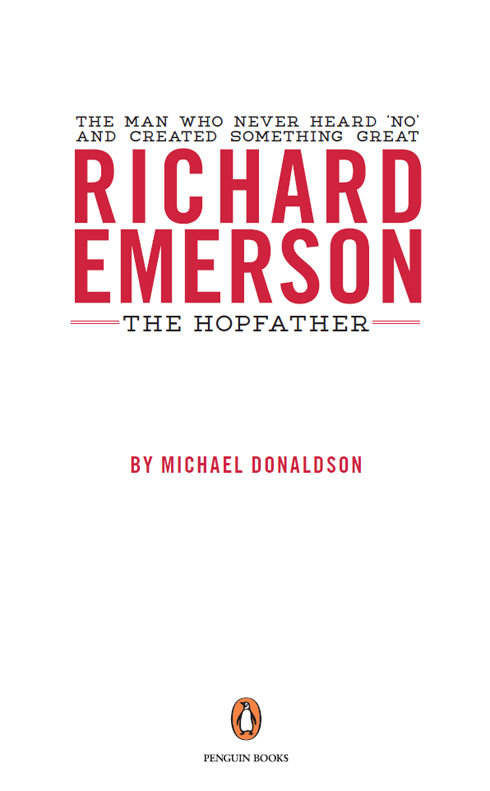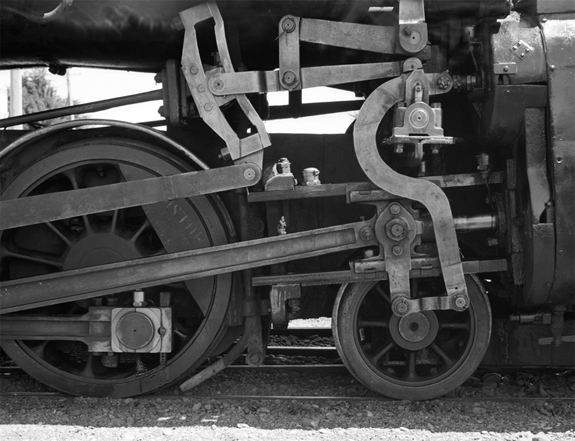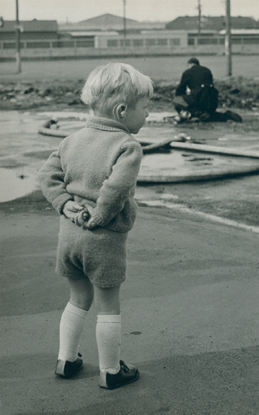RICHARD EMERSON IS ONE OF OUR PRE-EMINENT BREWERS, A TRAILBLAZER WHO IS OFTEN LAUDED AS THE GODFATHER OF CRAFT BEER IN NEW ZEALAND.
PROLOGUE
On 7 November 2012, Richard Emerson woke up a millionaire.
The previous day, Emersons Brewery officially sold to New Zealand brewing giant Lion for a sum of $8 million. Richards 12.1 per cent share in the business that carried his name netted him close to $1 million. That wasnt all though his mother Ingrid received a cheque for double that amount, half of which was to be held in trust for Richard as a form of early inheritance.
This was the kind of instant wealth people dream about when they buy a Lotto ticket. Except this wealth wasnt instant, nor did it just happen overnight. For Richard, it came after 20 years of unrelenting commitment to the cause of good beer. They were two decades of hard graft, physically and emotionally, of little or no pay, and of long hours, during which he watched his father, mentor and friend die just as the business began to stand on its own two feet. During that time, hed dealt with a broken marriage and the never-ending stress of making ends meet while trying to grow a business in a market that had little or no understanding of good beer.
For Ingrid Emerson, the payout was a reward not just for the 20-year investment she and her husband George had made in their sons business, but also for the almost 50-year investment shed made in Richard in teaching him the skills he needed to find his place in the world. It was a reward for the love and dedication shed given to ensuring her profoundly deaf son wouldnt just get by, but would also find success in a world where he would always struggle to fully understand other people, a world where he often felt isolated, different and misunderstood.
But it was never about money for either of them. Richard shrugs at the idea of being a self-made millionaire. Its nice to have something in your back pocket, he says with a smile.
Ingrid takes her fulfilment from the fact that Richard triumphed against all odds, and that she prevailed when others questioned what the hell she was doing as she tenaciously fought to guarantee her son would never be held back by his disability.
Theirs is a story not of tough love, but of practical love, of single-minded determination from Ingrid, George and Richard. Its a story about the power of a family. And its a reminder that a slow train ride is just as enjoyable as the fast-track to success.
This is the story of an adventurous boy who wouldnt let anything get in the way of what he wanted to do; a boy who fought for his place in the world and refused to let anyone tell him no.
Richard has a lifelong love of trains, inherited from his fathers love of railway photography.
CHAPTER 1
YOU KNOW HES DEAF, DONT YOU?
A young Richard Emerson with an early set of hearing aids. Richard was so profoundly deaf he had hearing aids in both ears rather than one as was more common in the late 1960s.
As a very young child, I was aware of thumps on the ground and loud noises. I would look around to see what it was and where it had come from. It took so long for me to hear that I was behind in terms of learning to read. My mother put in a lot of effort to help me learn to lip-read. She would have a spoon in her hand and hold it up to her face and say spoon. It wasnt easy for my mother, especially when I couldnt say the word Mum. I would call her Bum.
Looking back, Ingrid Emerson wonders what she would do given a choice. Go through with her pregnancy knowing her first-born child would more than likely suffer a severe birth defect? Or, as others did later, terminate the pregnancy?
What would I do if I had my time over? If I knew I had rubella would I have an abortion or not? I still dont know. Back then we had no choice but to take the risk.
Ingrid Holst married George Emerson in 1958, and they lived in a small flat near the University of Otago in Dunedin. Having gained a Bachelor of Science degree, she worked in the universitys biochemistry department where George was studying towards his PhD.
Ingrid knew she had married a scientist with a train obsession and a camera, a man with a passion for documenting railway infrastructure and the end of the steam age. Perhaps not quite as obvious was that shed married a man with an Elizabethan approach to married life what George wanted he got.
In October 1963, George wanted to spend Labour Weekend in Christchurch to indulge his passion for photographing steam trains. Ingrid dutifully packed the Commer Cob on which theyd recently spent their meagre savings, and off they went. The Commer was a cross between a station wagon and a van, and theyd bought it so they could save money by sleeping in it on Georges frequent train-chasing weekends away.
Ingrid, who was a few weeks pregnant at the time, cant remember the specific reason for the trip as there were so many train-related holidays over the years, she reckons theyve all blurred into one.
The one detail of the trip she remembers clearly wasnt to make itself known until a couple of weeks after they got home. I noticed when I had a bath I had a rash all over me. I went to the GP the next morning and he happened to have a skin specialist in his suite of rooms. They looked at it and decided it was rubella.
I had to go to the health department to get gamma-globulin I dont know what good it did you, but that was the only treatment they could give you that or an abortion, but an abortion wasnt mentioned at that moment at all. They did after that in fact, women demanded it when the next bout of rubella came around.
After Richard was born, a lot of people said to me: I had an abortion, why didnt you? Medical people asked me the same question when Richard was a little boy. One person said: What do you feel about having Richard like this? I remember saying its a hang of a lot of work, but I wouldnt be without him. Because what a fabulous addition to the world hes been, what a lot hes done for people, what a lot hes done for Dunedin.

